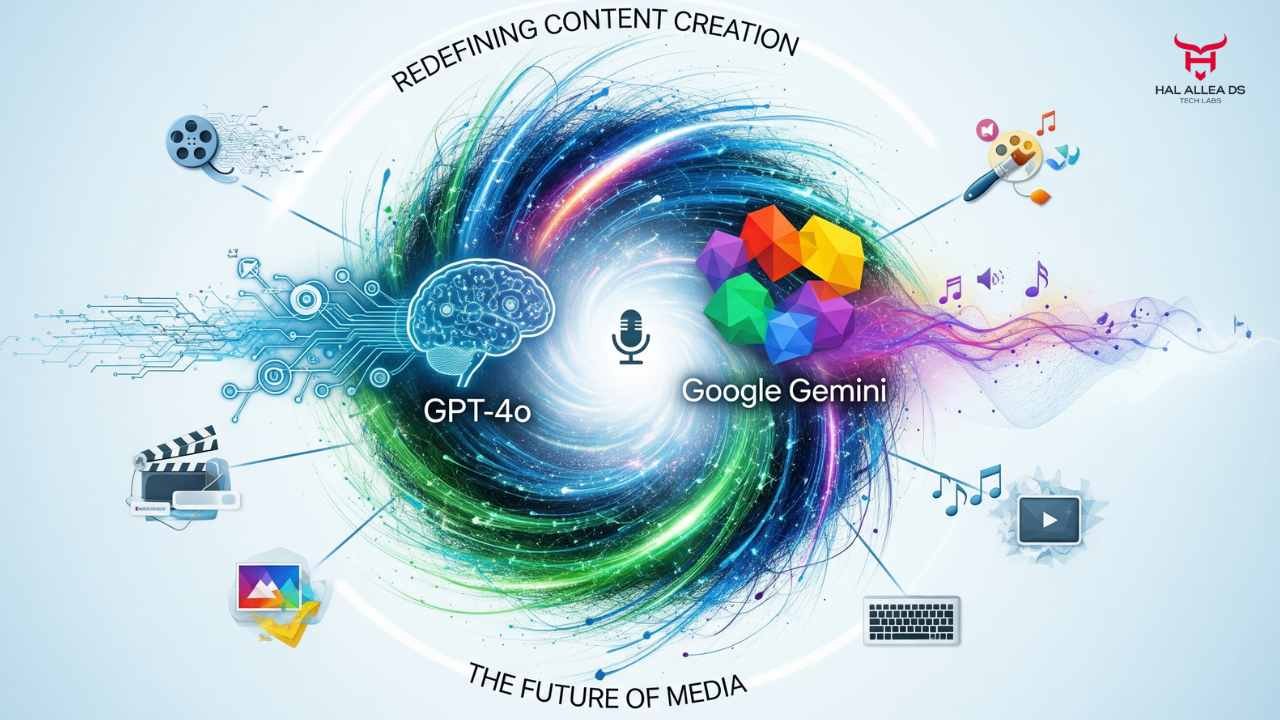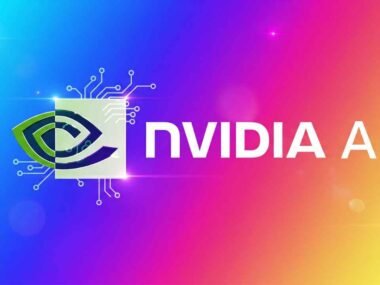In 2025, content creation isn’t just about words on a page. It’s about video, audio, images, and interactions that feel almost—sometimes uncomfortably—human. According to Gartner, 70% of enterprises will adopt some form of multimodal AI by 2026, a staggering leap from just 10% in 2022. That’s not gradual growth; that’s a gold rush.
Here’s the twist: the race isn’t just OpenAI versus Google anymore. A new pack of contenders—Anthropic, Meta, and Stability AI—is all pushing to define how people create, share, and monetize media. The tension? Investors want profits, creators want fair tools, and regulators want guardrails. And frankly, none of these groups are on the same page.
The Data: Why Multimodal AI Is Exploding
Multimodal AI refers to systems that combine text, images, video, and audio into one seamless interface. Think of asking an AI to draft a script, generate an image storyboard, and even produce a voiced-over demo—without leaving a single platform.
- Stat 1: According to Bloomberg Intelligence, the multimodal AI market is expected to reach $90 billion by 2030, growing nearly 40% annually.
- Stat 2: A McKinsey report projects that generative AI could drive $4.4 trillion in annual global productivity gains, with multimedia marketing, film, and gaming among the top beneficiaries.
- Stat 3: YouTube creators using AI-assisted assets (thumbnails, auto-captioning, and music generation) saw 25–30% higher engagement on average in Q1 2025, Insider Intelligence found.
The platforms to know?
- OpenAI’s GPT-4o – “Omni” means it listens, speaks, sees, and writes in real time, effectively merging ChatGPT, DALL·E, and new voice/video engines.
- Google Gemini 1.5 Pro – The search giant’s flagship LLM blends search, video, and coding into one AI studio.
- Anthropic’s Claude 3.5 Vision – Known for alignment and safety, Claude can perform multi-turn reasoning across charts, videos, and complex documents without melting down.
- Meta’s Emu and Audiobox – Focused on social-first multimodal creations: avatars, filters, AI-generated Reels.
- Stability AI’s Stable Diffusion 3 + Stable Audio – Open-source multimodality, enabling indie creators to bypass walled gardens.
This is more than a product list. It’s a proxy war over who controls the future of digital storytelling, advertising budgets, and eventually, political influence.
The People: Insiders and Skeptics Speak

For anyone watching the space, AI hype has started to feel a little blurry. Everyone claims they have “the most aligned, powerful, or creative model.” But insiders admit it’s not so simple.
“OpenAI’s GPT-4o has insane versatility,” a former product manager at a Fortune 500 ad agency told Forbes. “But right now, it’s limited by licensing deals and unclear usage rights. We can’t tell clients: yes, your campaign imagery is 100% royalty-free. That’s a problem.”
Meanwhile, a Google researcher, speaking on condition of anonymity, said:
“Gemini is built for integration across Gmail, YouTube, and Docs. But that’s also its weakness—it’s an ecosystem lock-in strategy. Once you start, you can’t leave. And creators notice that.”
This smells like déjà vu, similar to when Facebook controlled social distribution, and media companies found themselves hostage to algorithm changes. Now we’re watching AI monopolies form in real time.
Even creators are conflicted. One indie game developer in Austin said, “I love Stability because I can run it locally. But my investors constantly ask why we’re not just using OpenAI—like we’re crazy not to. Sometimes it feels less about capability, more about clout.”
The Fallout: Winners, Losers, and Real Consequences
So what happens when five giants compete to set the rules of creativity?
- For Creators: Democratization and dispossession at once. Yes, it’s easier than ever to start a one-person film studio powered by AI. But platforms increasingly demand licensing fees or integrate subtle usage restrictions. “Free creativity” might be free only until the platforms decide to announce new monetization tiers.
- For Investors: Consolidation pressure. Venture funding in early-stage generative AI fell 30% year-over-year in Q2 2025, according to PitchBook. Why? Because the market is concentrating around the top five, and LPs are wary of funding the “next big” AI startup that ultimately gets crushed.
- For Workers: Hollywood unions and creative guilds continue strikes and negotiations over synthetic media. In one case this year, a studio tried to replace background actors with AI-generated composites. Lawsuits are still pending, but analysts predict up to 20% of production jobs could be automated away by 2030.
It’s not all dystopian. Some of these tools genuinely empower creators who never had access to expensive equipment. A solo YouTuber can create animated shorts that rival Pixar-level polish in weeks. Small ad agencies can draft multilingual campaigns without hiring ten translators.
Still, there’s a darker undertone: dependency. Once an industry builds workflows around a single AI leader, that company controls creative economic levers in ways we haven’t fully grasped.
Company-by-Company Breakdown
1. OpenAI’s GPT-4o (Omni)
Strength: Real-time multimodal. Whisper a line, sketch a concept, and Omni spits out a voiced, animated sequence in seconds.
Weakness: Opaque licensing and ongoing questions about the company’s governance. Remember Sam Altman’s temporary ouster in late 2023? Investors haven’t forgotten.
2. Google Gemini 1.5 Pro
Strength: Ecosystem dominance. Imagine AI copilots spread across YouTube scripts, Gmail auto-responders, and even music scoring. Google’s moat is colossal.
Weakness: Risk of overreach. Antitrust regulators in Europe are already probing Gemini’s bundling practices.
3. Anthropic Claude 3.5 Vision
Strength: Trusted on ethics. Claude’s “constitutional AI” has won plaudits among policy leaders. It hallucinates less and parses complex docs like SEC filings more cleanly.
Weakness: Struggles with mass adoption. Consumer buzz is low outside of tech-heavy circles, though enterprise adoption is climbing.
4. Meta’s Emu + Audiobox
Strength: Built for virality. These models churn out Instagram-ready stickers, avatars, and short-form video elements. Creator-friendly in tone.
Weakness: Monetization is still unclear. Meta has long struggled to translate flashy features into sustainable creator economics.
5. Stability AI’s Stable Diffusion 3 + Stable Audio
Strength: Open-source access. Hobbyists, indie studios, and academics can innovate without paying monthly fees.
Weakness: Fragmented community, declining funding. Recent layoffs raised questions about Stability’s long-term survival.
Regulatory and Global Tensions
The ripple effects go beyond Silicon Valley.
- EU: Drafts are circulating for a Media Authenticity Act, requiring watermarking of AI-generated video/audio by 2026.
- China: Baidu and Alibaba are building parallel multimodal systems, with tighter state oversight. The export question looms.
- U.S.: Congress remains gridlocked, but Hollywood and news publishers are lobbying hard for clearer copyright protections.
That means the very notion of who “owns” AI-generated creativity could be rewritten in law within the next 24 months.
Closing Thought
The multimodal AI boom may democratize creativity—or quietly centralize it under five corporate giants faster than regulators can blink. Creators get superpowers, but also shackles. Investors see upside, but only for the chosen few platforms. Workers sense empowerment for some, obsolescence for others.
Here’s the thing: disruption always promises a level playing field but rarely delivers one.
So the real question isn’t “Which multimodal AI is better?” It’s this: When AI platforms become the default pipes for imagination itself, will humanity still own its stories—or will Silicon Valley quietly take the royalties?












